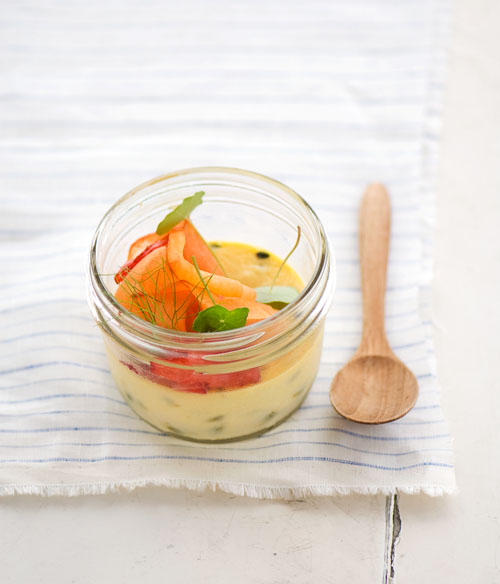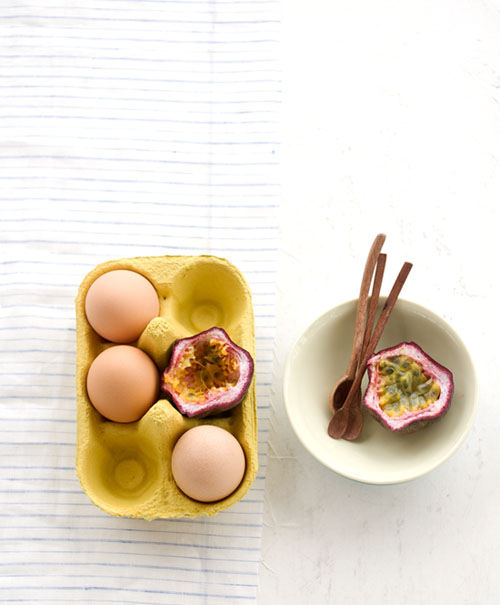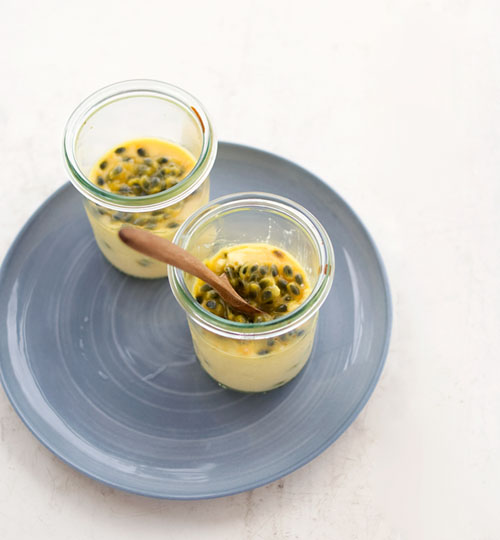March 22, 2010 at 5:29 pm
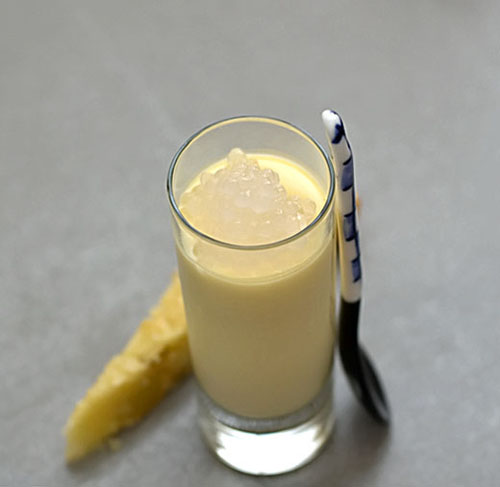
(Passionfruit custard with candied ginger boterkoek)
A few days ago, I was given a bag of passionfruit, freshly picked from a friend’s backyard. Edible gifts like these are my favourite thing to receive. I often ‘pay it forward’ by baking with these gifts which are then given away to other people.
These passionfruit were especially good – large, heavy fruit with shiny skins and a really sweet, sharp aroma that lifted into the air when you cut into one. I’m not a fan of eating passionfruit ‘neat’ – something about it’s acidity does not agree with me unfortunately. Combined with dairy products or baked in cakes and cookies however, it becomes a pleasant, perfumed flavour that I would happily enjoy any day.
I love pairing passionfruit with white chocolate ganache, vanilla ice-cream, pineapple bavarois, coconut pannacotta or even served simply as a passionfruit curd tart (caramelise each individual slice with some icing sugar and a blowtorch, for that extra special touch). Passionfruit also goes well with floral flavours like violet and lavender, citrus fruits such as yuzu, mandarin, lemon and lime, and spices like star anise and tonka bean. Serve with nasturtium petals or borage, if you can source any.
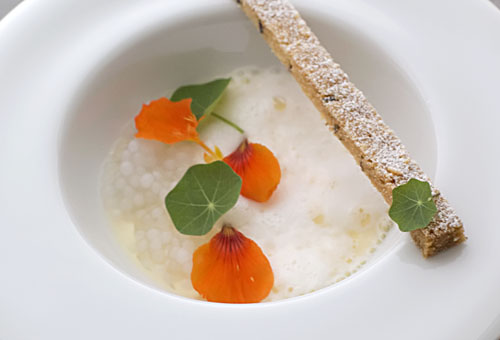
(Passionfruit custard with sake and lavender)
With the passionfruit I was given, I decided to make a custard. Something about the silky, soothing nature of custards really appeals to me at the moment. If my life were an ad, there would be bluebirds chirping in the background and butterflies fluttering at the edges of my vision as I savour each spoonful.
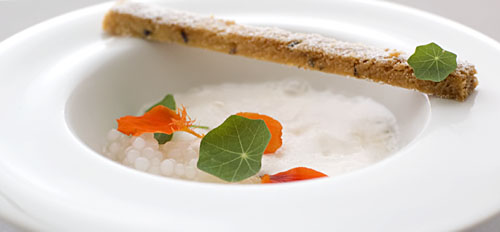
Granted, this custard is more of a set cream, but it has the texture and lazy flow of a custard, and eats like one, so I’m sticking with the name. This custard is insanely good with ginger boterkoek, or for something a little more fancy, it can also be dressed up with tapioca pearls, sake bubbles and twice-baked lavender shortbread.

(For those moments where you need a little peace and quiet..)
Passionfruit Custard :
415g pouring cream (35% fat)
50g European-style yogurt
185g skim milk
120g passionfruit juice (strained pulp from approximately 6 large passionfruit)
70g caster sugar
2 1/2 leaves gold-strength gelatine, soaked in iced water until soft and pliable
Warm the cream, yogurt, milk, passionfruit juice and sugar in a pan, stirring until the sugar dissolves. Squeeze the water out of the gelatine, and add it to the cream mixture. Whisk this gently until dissolved, then strain the mixture into a bowl. Allow to cool before pouring it into your desired containers. Allow the custards to chill overnight in the refrigerator before using.
Candied Ginger Boterkoek :
(Boterkoek is a Dutch buttery shortcake. You can alter the flavourings to suit your preferences. This recipe is from Warm Bread and Honey Cake by Gaitri Pagrach-Chandra)
150g caster sugar
250g plain flour
1/4 teaspoon salt
zest of 1/4 lemon
200g butter, softened
1 egg yolk
a little beaten egg, for glazing
100g stem (preserved) ginger, drained and chopped
75g fine dessicated coconut
Optional:
55g blanched whole almonds
55g skinned hazelnuts
Mix the caster sugar, flour, salt and lemon zest together in a large bowl. Add the softened butter and egg yolk and knead until everything is well mixed in. Knead in the ginger and coconut. Shape the dough into a ball and put it in a sealed plastic bag in the refrigerator overnight.
Next day, remove the dough from the refrigerator and leave to come to room temperature.
Preheat the oven to 180’C. Grease a 24 cm/9 inch round tin and dust with flour.
Knead the dough very briefly, then shape it into a large disc and put it in the tin. Use your hand to flatten it as evenly as possible to fit the tin. Brush with beaten egg. If you are using almonds or hazelnuts, press them into the surface. Otherwise, score a plaid pattern onto the surface with a fork.
Bake in the oven for 20 – 25 minutes. Boterkoek should never be hard of crisp, so this should be baked only until just done. It will be soft when it comes out of the oven. Leave to cool until lukewarm in the tin, then carefully turn it out onto a wire rack to cool completely.
Store in an airtight container in a cool place so that the butter doesn’t go rancid. It will keep for at least 1 week but is at its best after 24 hours.
Twice-baked lavender shortbread :
(based on a recipe from Pure Dessert by Alice Medrich)
170g unsalted butter, melted and still warm
5 tablespoons caster sugar
1 teaspoon pure vanilla extract
1/4 teaspoon sea salt
190g plain flour
1 1/4 teaspoons dried lavender buds
Line a 7 x 10 inch pan with baking paper.
In a bowl, combine the melted butter, sugar, vanilla, lavender and salt. Add the flour and mix until just incorporated. Spread the dough evenly in the pan. Let it rest overnight on the kitchen counter (don’t refrigerate).
Preheat the oven to 150’C. Bake the shortbread for 45 mins, then remove the pan from the oven. While the shortbread is still warm, use a pizza cutter or sharp knife to cut the shortbread into the desired shapes. Allow to cool for 10 minutes, then lift the cut pieces onto a baking lined tray, positioning them slightly apart so that they bake evenly. Return the shortbread pieces to the oven for an additional 15 minutes, then remove from the oven and allow to cool completely on a rack.

